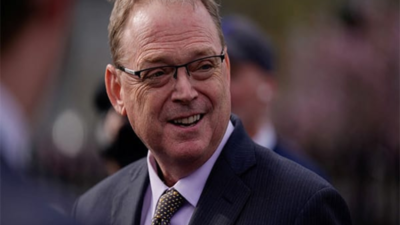
Donald Trump’s 50 percent tariffs on Indian exports to the US took effect on Wednesday, with White House officials linking the move to both trade disputes and geopolitical tensions.US national economic council director Kevin Hassett described the India-US relationship as “complicated,” citing India’s “intransigence” to open its markets to American products and its continued purchase of Russian oil.
‘Give Up Or Else Face…’: U.S. Issues One More Threat To India Over Russia Oil Amid Trump Bullying
“I think it’s a complicated relationship. Part of it has been tied to the pressure we’ve been trying to put on Russia in order to secure a peace deal and save millions of lives. And then there’s the Indian intransigence about opening their markets to our products,” Harrett was quoted as saying by ANI.The tariff hike, announced through a notice from the US Customs and Border Protection (CBP), stems from President Donald Trump’s Executive Order 14329, issued on August 6. The order raised duties on Indian goods by an additional 25 percent, bringing the total to 50 percent. Hassett likened the trade talks to a marathon, saying they require a long-term outlook and acceptance of “ebbs and flows” before reaching a resolution.“When you look at trade negotiations, one lesson we’ve all learnt is that you need to keep your eyes on the horizon and recognise that there are going to be ebbs and flows before we reach the final position,” he said.He also hinted at a tougher approach from Trump if India refuses to yield, “and if the Indians don’t budge, I don’t think President Trump will need it,” he said, suggesting the possibility of further escalation.India’s growth is driven largely by domestic consumption rather than exports, making consumer and business sentiment key to its economic momentum. The US, though India’s largest export market with $87.4 billion in goods shipped in 2024, accounts for only about 2 percent of India’s GDP, compared with private consumption, which makes up nearly 60 percent.Having asserted its “red lines” in trade negotiations with the US, particularly its right to protect national interests and maintain strategic autonomy in purchasing Russian crude, India is now moving to cushion the blow of steep American tariffs.The government is fast-tracking policy measures, including GST restructuring, to reinforce economic confidence and sustain growth.










